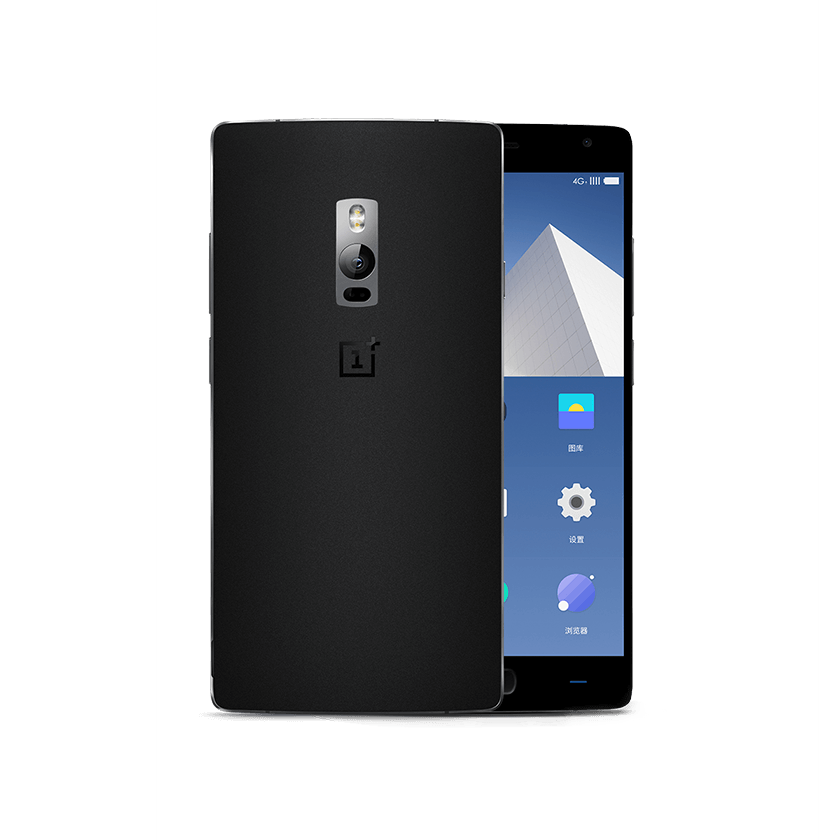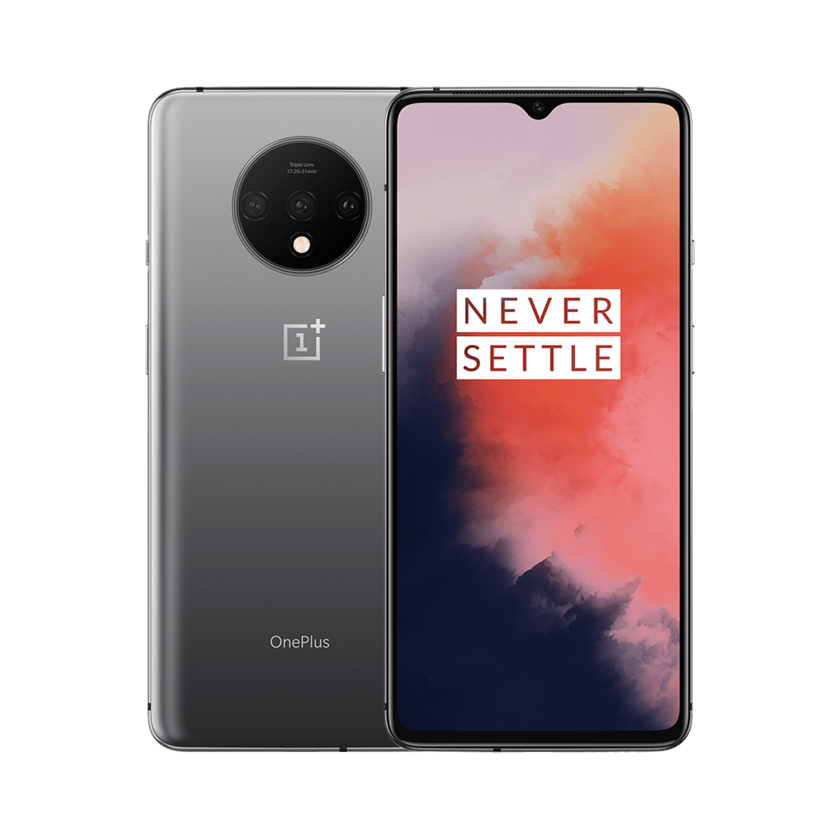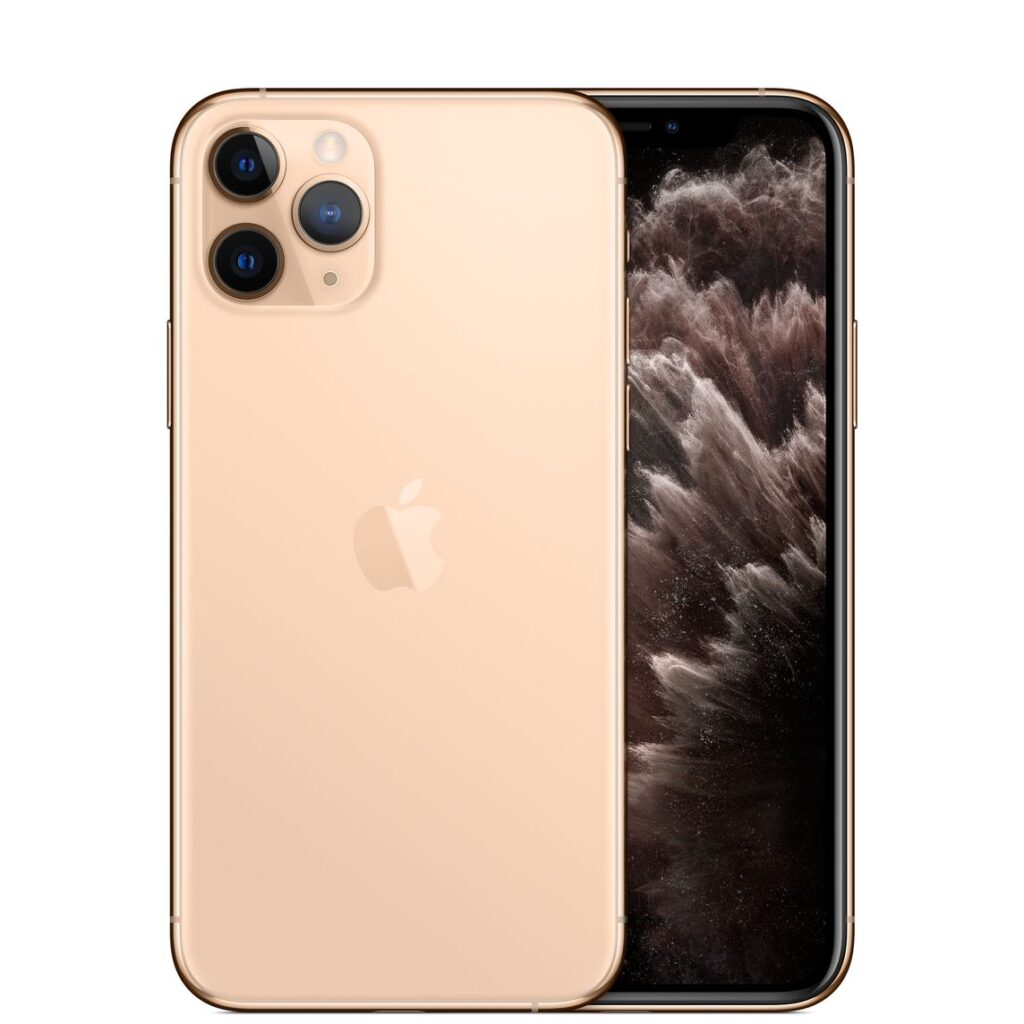The brand OnePlus has a polarized position in the technology world. On one side, there is a group of “die-hard” OnePlus fans who enjoy everything this brand offers, mainly the speed of its devices. On the other side, there is a group of people who doubt the brand’s strategy to gradually move towards a premium brand. No matter which side fits you better, there is no denying that OnePlus has greatly impacted the smartphone industry. We will now rewind the clock and dig through the history of OnePlus devices.
OnePlus One: The Birth

April 23, 2014, the birth of the OnePlus One. This device was released in a way that no other manufactures have ever done. The infamous OnePlus “Invite System” was the only way people could buy this phone at the time. OnePlus did this in an effort to prevent any potential manufacturing burden for an infantry brand.
OnePlus launched a series of contests on social media platforms, winners had the chance to buy the phone. Thanks to this strategy, enthusiasts flooded to social media hoping they can get invites, which ultimately turned into a free campaign to introduce OnePlus to more audiences. All the hypes were for a good reason, the OnePlus One was one of the best smartphones at the time simply because of its high spec, low price.
Key Specifications/Features
- Qualcomm Snapdragon 801
- 3 GB RAM
- 16/64GB storage
- 3100 mAh battery
- CyanogenMod 11S based on Android 4.4
- Bluetooth 4.1
Low Price
Smartphones that had a similar specification were Samsung Galaxy S5, LG G3, HTC One M8. However, OnePlus was able to offer its “flagship killer” at half the price($299)
What is missing at $299
- No IP Rating
- No Fingerprint Scanner
- No Quad-HD Display
OnePlus One was a huge success for the brand new smartphone manufacturer. According to WSJ, OnePlus sold around 1.5 million units in one year. It all seemed promising for this new brand.
OnePlus 2

Compared to OnePlus One, the OnePlus 2 was the most disappointing OnePlus device ever released. Why? Simply because the OnePlus had a huge success that they never expected. With minor upgrades in comparison with the OnePlus One, the OnePlus 2 had an incremental spec bump, similar chassis, bigger battery.
The best features the phone brought were a fingerprint sensor and a Type-C charging port. However, these minor spec bumps did not justify the $30 price bump not to mention OnePlus continued its “invite-only” strategy.
Key Specifications/Features
- Qualcomm Snapdragon 810
- 4 GB/3 GB RAM
- 64 GB/16 GB Storage
- 3,300 mAh Battery
- Fingerprint Sensor
- OxygenOS based on Android 5.1
Although the OnePlus 2 was an overall disappointment, as of September 2015, it had accumulated over 5 million reservations. For a brand that’s releasing the second phone, it surely was a success in terms of brand popularity.
OnePlus X

In November 2015, OnePlus released another device, the OnePlus X. At a time when manufacturers consistently increased the display size of their devices, OnePlus experimented devices with a smaller display for fans who were reluctant to use big-screen phones.
Key Specifications/Features
- 5.0-inch Display
- Qualcomm Snapdragon 801
- 3GB RAM
- 16GB Storage
- 2,525 mAh battery
- OxygenOS based on Android 5.1.1
What is missing at $249
At $249, the OnePlus X was absolutely a bargain in its class. However, 16GB being the only storage option was definitely a drawback. Also, at a time when people were still loving the original OnePlus One, coupled with the disappointment of the OnePlus 2, OnePlus had to accept the fact that smaller phones won’t reach a bigger audience. Unfortunately, the OnePlus X was the only phone in its X series.
OnePlus 3

With the disappointment of the OnePlus 2, the OnePlus needed a new device to continue its up-trend in this ultra-competitive industry. Well, the OnePlus 3 is proudly delivered.
OnePlus has always emphasized its “need for speed” mentality. The OnePlus 3 had some of the best specifications in its class, even when compared to devices that doubled its price. The Samsung Galaxy S7, LG G5, and HTC 10 were all retailed at $600+ and were all powered by the Snapdragon 820 chip. However, their starting storage and RAM options were all 32GB and 4GB, respectively.
Key Specifications/Features
- Qualcomm Snapdragon 820
- 6GB RAM
- 64GB Storage
- Dash Charge (5V 4A)
- 3000 mAh Battery
What is missing at $399
As OnePlus entered the spotlights of more audiences, people began noticing a trend, which is the price increase of each of its device releases. Though OnePlus still undercut its device prices compared to most premium competitors, some buyers were disappointed to see some features were still missing. The OnePlus 3 didn’t have an IP rating, the same 1080P display, single bottom-facing speaker.
OnePlus 3T—-T is the new S

Apple had been releasing their S lineup every other year. Well, in November 2016, OnePlus introduced the world with its “T” series. The OnePlus 3T marked the first time the company released 2 devices both with flagship specifications.
Key Specifications/Features
- Qualcomm Snapdragon 821
- 6GB RAM
- 64GB / 128GB Storage
- 3,400 mAh
Many may argue that the “T” series isn’t a necessity as it only had minor upgrades when compared with its predecessor. However, the “T” series filled an important spot that was previously occupied by the Samsung “Note” series.
After a disastrous release of the Galaxy Note 7, Samsung had to eventually recall all Note 7 devices due to battery issues. This somehow helped OnePlus 3T as spec-hungry buyers had limited options when it came to devices that are powered by Snapdragon 821, the latest processor at the time.
What is missing at $439?
The OnePlus 3T had the best specification this price could offer at $439. However, as the brand continued to grab more attention, the weaknesses of its devices were exposed to a larger crowd. The OnePlus devices had weak camera performance when compared to Apple and Samsung in their respective flagships.
OnePlus 5

OnePlus skipped the number 4 because in Mandarin, “4” sounds like “death”. The OnePlus 5 was released in June 2017 and it had incremental upgrades when compared to its predecessor. However, when compared to competitors, the OnePlus 5 held its place comfortably.
Key Specifications/Features
- Qualcomm Snapdragon 835
- 6/8GB RAM
- 64/128GB Storage
- Dash Charge
- Bluetooth 5.0
- Dual Rear Cameras
The main competition came from devices like the Samsung Galaxy S8 which had one of the most elegant designs but lacked monstrous specifications that the OnePlus 5 had. As for HTC U11 and LG G6, they continued to struggle overall.
What is missing at $479
- IP Rating
- Quad-HD Display
- Dual Speakers
OnePlus 5T

2017 was the year that saw many devices with an 18:9 screen aspect ratio. It first started Samsung Galaxy S8/S8 Plus and LG G6. By having a taller display, phones had become narrower which helped one-handed use.
The OnePlus 5T also had an 18:9 screen aspect ratio. The company also moved the fingerprint scanner to the rear of the phone where your index finger naturally rests on. OnePlus also introduced one of the fastest facial recognition in all smartphones, though not as secured as other biometric security features.
Key Specifications/Features.
- Qualcomm Snapdragon 835
- 6/8 GB RAM
- 64/128 GB Storage
- 6.01 inches 18:9 Display
- Dual Rear Cameras
- Rear-mounted Fingerprint Scanner
- Face Unlock
What is missing at $499
- No IP Rating
- No Quad-HD Display
- No Dual Speakers
OnePlus 6

Also in 2017, continued to 2018 and beyond, many devices launched with one of the worst “features” in smartphone history–the notch(thanks Apple). Unfortunately, OnePlus was one of the many manufacturers who jumped on that bandwagon.
The OnePlus 6 was launched in May 2018. Although it had a regrettable notch, there’s no denying that the device was well designed all around. Moving away from the unibody design language, the OnePlus 6 had a glass back, a notch that housed a speedy facial recognition camera, tall aspect ratio while offering one of the fastest software experiences.
OnePlus managed to sell one million OnePlus 6 in just one month. For a company that’s 4 years old, it was quite impressive, to say the least.
Key Specifications/Features
- Qualcomm Snapdragon 845
- 64 GB/128 GB/256 GB Storage
- 6 GB/8 GB RAM
- Face Unlock
- 3300 mAh Battery
What is missing at $529?
- No IP Rating
- No Wireless Charging
- No Quad-HD Display
OnePlus 6T

2018 presented a huge opportunity for OnePlus as the company partnered with T-Mobile to release its newest smartphone–the OnePlus 6T. The timing of this partnership couldn’t have been better as the OnePlus 6T brought a feature to the U.S. market no other manufacturers had done–an under-screen fingerprint scanner.
Thanks to the partnership with T-Mobile, the OnePlus 6T outsold the OnePlus 6 by 249% in the first 30 days. OnePlus enthusiasts lined up at the T-Mobile flagship store so they can be the first ones to grab the OnePlus 6T–a scene that happened only at Apple stores.
Key Specifications/Features
- Qualcomm Snapdragon 845
- 6 GB/8 GB/10 GB RAM
- 128 GB/256 GB
- 3700 mAh Battery
- In-display Fingerprint Sensor
What’s Missing At $549
- No IP Rating
- No Quad-HD Display
- No Headphone Jack For The First Time
- No Wireless Charging
OnePlus 7 & OnePlus 7 Pro

With the huge success of the OnePlus 6T, it was only reasonable to expect more from the company’s next flagship, or flagships, because OnePlus released 2 phones, the OnePlus 7 and the OnePlus 7 Pro.
The OnePlus 7 wasn’t made available in the U.S. market. In fact, the only notable changes it brought to the table were a Qualcomm Snapdragon 855 processor and an upgraded camera system. On the other hand, the OnePlus 7 Pro was made significantly better than OnePlus 7(to justify its premium price tag?). This time around, the OnePlus 7 Pro was made available for Sprint with 5G capability.
Key Specification/Features(OnePlus 7 Pro)
- Qualcomm Snapdragon 855
- 6GB/8GB/12GB RAM
- 128GB/256GB UFS 3.0
- 4000 mAh Battery
- Warp Charge 30 Fast Charging
- In-display Fingerprint
- 3120 x 1440 Quad-HD Display
- Pop-up Camera
- 90 Hz Refresh Rate
What’s missing at $669?(OnePlus 7 Pro)
- No official IP Rating
- No Headphone Jack
- No Wireless Charging
OnePlus 7T & OnePlus 7T Pro

2019 was definitely the busiest year for OnePlus as the company released a total of 4 flagship devices. Many may consider that the OnePlus 7 was a forgettable device simply because it got out-classed by OnePlus 7 Pro. This time around, the same story continued.
OnePlus 7T had a new design on top of the usual spec-bump. For example, it inherited the circular triple-camera layout from the OnePlus 7 Pro, it also stretched the display to be taller and thinner. Speaking of the display, the OnePlus 7T also inherited a 90Hz display from the OnePlus 7 Pro.
As for OnePlus 7T Pro, there are minimal changes when compared to the OnePlus 7 Pro. Aside from the newest processor and slightly bigger battery, the OnePlus 7T Pro kept the same full-screen display as well as the pop-up selfie camera.
Key Specifications/Features(OnePlus 7T Pro)
- Snapdragon 855+
- 8GB/12GB RAM
- 256GB Storage
- 90Hz refresh rate
- 1440 x 3120 Quad-HD Display
- Pop-up Camera
- 5G
What’s missing at $899(T-Mobile McLaren Edition)
- No Wireless Charging
- No IP Rating
OnePlus 8 & OnePlus 8 Pro

The year 2020 didn’t get to a great start because of the Coronavirus pandemic which caused the cancellations of multiple technology events. Well, that didn’t affect OnePlus with its release of the OnePlus 8 and OnePlus 8 Pro as the company live-streamed the event online.
The OnePlus 8 retails at $699 while the OnePlus 8 Pro starts at $899 which definitely isn’t affordable. However, as always, the OnePlus 8 and 8 Pro are still two of the cheapest 5G smartphones with Snapdragon 865
Key Specifications/features(OnePlus 8)
- Qualcomm Snapdragon 865
- 8GB/12GB LPDDR4X RAM
- 128GB/256GB UFS 3.0 Storage
- 4300 mAh
- Warp Charge 30T Fast Charging
- 90 Hz Display
- 5G
What’s missing at $699
- No Wireless Charging
- No IP Rating
- No Quad-HD Display
Key Specifications/features(OnePlus 8 Pro)
- Qualcomm Snapdragon 865
- 8GB/12GB LPDDR5 RAM
- 128GB/256GB UFS 3.0 Storage
- Warp Charge 30T Fast Charging
- 30W Wireless Charging
- Triple Camera
- 120Hz Display
- IP 68 Rating
- Quad-HD Display
What’s missing at $899?
- Nearly None!!!
Why nearly? Moving away from a pop-up camera, which achieved full-screen display, to a hole-punch display is a slight downgrade, at least to my taste. Other than this nitpicking, the OnePlus 8 Pro is almost perfect.
Here comes the question, from $299 to $899, do you think OnePlus deserve the justification of the price bumps with its devices? My answer is yes because each of its devices can go up against competition from big brands like Samsung and Google while always undercut in terms of price.





